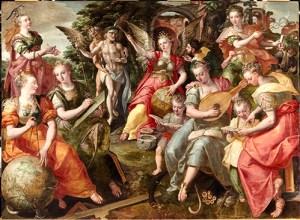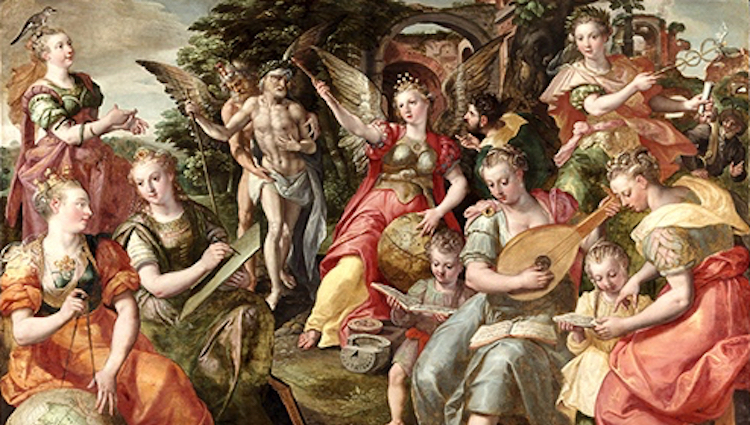 One of the more remarkable trends in the past five years in Catholic education is the noticeable increase of schools embracing a “classical education.” Ten or twenty years ago, the Catholic classical school was a start-up by disgruntled laity. Now one can find here and there whole diocesan school systems that have embraced the classical model. But does this classical model somehow make the school more “Catholic”? Does the teaching authority of the Church somehow endorse one curricular approach over others?
One of the more remarkable trends in the past five years in Catholic education is the noticeable increase of schools embracing a “classical education.” Ten or twenty years ago, the Catholic classical school was a start-up by disgruntled laity. Now one can find here and there whole diocesan school systems that have embraced the classical model. But does this classical model somehow make the school more “Catholic”? Does the teaching authority of the Church somehow endorse one curricular approach over others?
As a matter of historical fact, for centuries “classical” and “education” were nearly synonymous. The books that were read varied by time and place, but generally the curriculum included epic poets such as Homer and Virgil, historians such as Thucydides and Livy, and philosophers such as Plato and Cicero. Mathematical instruction generally went no further than arithmetic and geometry—these were the days before algebra and the calculus. Natural science was generally not included at all, rather being a field for specialists. The first point to see here is that Catholic education grew up as an evangelized form of classical education. The Ratio Studiorum of the Jesuits is the crowning achievement of this synthesis—fully classical, fully Catholic. It is for this reason that one does not find “magisterial” statements on classical education. The classics were so much a part of education for so long, that their essential relationship was given and unquestioned.
It is the early modern period with Descartes and Galileo that begins to challenge this status quo. (Descartes’s opening chapter of his Discourse on Methods sounds the charge). Very gradually, mathematics and science become a more significant part of the curriculum. By the end of the 1800s, in many places in Europe, a full-fledged “scientific curriculum” starts to take the place of the classical curriculum, especially in higher education. The spirit of this education tended to be anti-religious, taking its bearings from the materialist outlook of the Enlightenment. The Church of course does not object to studying nature, which after all is the work of Divine wisdom and power. But the “philosophy” that guided many in this period sought science as a replacement for theology.
In the period before the Second Vatican Council, the popes began to caution the faithful about this curricular change. Pius XII, for example, in an allocution to students said, “We are not unaware also of the present tendency of techniques to prevail more and more on speculative science. The danger would be if you were to immerse yourselves so strongly in the material elements as to lose or diminish the sense of Christian culture, so rich in values of truth and wisdom and saturated with what ancient times had of eternal worth.” (1/30/49) In a speech to the First International Congress of Ciceronian Studies, Pope John XXIII declared, “Alas, there are too many who are abnormally captivated by the progress of technical studies and take it upon themselves to disdain and limit the study of the Latin tongue and similar disciplines.” On the contrary, “that which nourishes and adorns the mind should be more urgently sought after, lest wretched mortals exist like manufactured machines, cold, hard and devoid of love.” (4/7/59) The scientific curriculum, for all of its benefits, does not unite the Catholic student with his intellectual heritage. It does not inform him who he is as a man, as a being made to the image and likeness of God.
This tone of anxiety concerning the ascendency of scientific education becomes more pronounced at the Council itself, however strange that may sound to those of us who live after it. Even the optimistic Gaudium et spes observes that “today’s progress in science and technology can foster a certain exclusive emphasis on observable data, and an agnosticism about everything else. For the methods of investigation which these sciences use can be wrongly considered as the supreme rule of seeking the whole truth.” (n. 57) At the beginning of the Council, John XXIII promulgated the Apostolic Constitution Veterum sapientiae, “On the Promotion of the Study of Latin,” which insisted that formation in Latin language and literature “exercises, matures and perfects the principal faculties of mind and spirit. It sharpens the wits and gives keenness of judgment. It helps the young mind to grasp things accurately and develop a true sense of values. It is also a means for teaching highly intelligent thought and speech.” When one combines these two messages, plainly the Church gives a “priority of place” to classical studies over other forms of education, and identifies clear dangers in the scientific education as popularly promoted.
The problem with the view that a Catholic school could adapt a range of curricular approaches, or simply create a kind of curricular pastiche by parts of various curricula, is that no educational program is “value free.” A curriculum carries with it a view of man’s place in the universe, his ability to know, and the goods that perfect him. The scientific curriculum emerged out of an effort to propose radically different answers to the ones that were traditionally accepted. While “true science” can never be contrary to Catholic teaching, disentangling the teachings of modern science from their Enlightenment foundations is no easy task, especially for most educators. The Church in the twentieth century continued to honor classical education for its proven track record of perfecting the mind and nourishing the heart. Any alternative approach must be able to show the same fruits.
The Imaginative Conservative applies the principle of appreciation to the discussion of culture and politics—we approach dialogue with magnanimity rather than with mere civility. Will you help us remain a refreshing oasis in the increasingly contentious arena of modern discourse? Please consider donating now.
The featured image is “Allegory of the Seven Liberal Arts” and is in the public domain, courtesy of Wikimedia Commons.


